Potting medium for citrus
I have about 20 murraya koenigii (curry leaf plant) that I am ready to move out of the deep root paks they are in and into small pots.
They were started in Miracle Gro Moisture control mix (because that's what I had on hand when the seed arrived unexpectedly early).
Long term - m. koenigii prefers a somewhat acid soil; they tend to need supplemental iron and Mg; they HATE having roots disturbed and tend to be deeply rooted when planted in the ground. It is VERY hard to transplant one that has been growing outdoors because you are almost guaranteed to have to chop off the deeper roots, then the plant dies. This isn't quite as much of a problem in a pot because the pot contains all the roots, but still something that must be considered. They need to dry out just slightly between waterings but still need water retentive soil.
They've got to the point where I'm having trouble keeping them watered properly in the smaller (though deep) starter paks they are in - but I'm waffling about what sort of mix to transplant them into. I'm tending to err on the side of UNDERwatering. I need to get them out where I can deal with them individually.
I'm wondering what people are using as growing medium for their citrus? I'm leaning towards a 1:1:1 blend of peat, pumice and pine fines, or even 1:1 peat-pumice.
I have considered 5:1:1 but am concerned about the frequency of repotting I have heard that may require for citrus (I've read every year in other posts on this forum) - ungood for a plant that doesn't like having its roots disturbed.
Comments (19)
greenman28 NorCal 7b/8a
9 years agoHey, Zen, I've had my Moro Blood Orange in a gritty 5-1-1 for years now. I used uncomposted screened Fir bark, coarse Perlite, red lava rock (scoria), and a small amount of quartzite. I'll need to re-pot next year.
I highly recommend a durable bark-based mix with little or no peat. The traditional 5-1-1 is fine for a couple years, but you can get more life out of the mix if you start with uncomposted bark and use porous grit such as pumice, DE, turface, lava rock to increase moisture retention.
If you opt for a peat-based or peat-inclusive mix, you will do much more trauma to the trees' roots when re-potting.
Josh
meyermike_1micha
9 years agoJosh, good advice...A good porous mix is a must and I use the 5.1.1 mixes mostly for mine..A variation of it at times too depending on what I have on hand to mix up..
I like what you use..Did anyone ever tell you how nice the color of your mixes are too? Looks so nice with those nice green tree perched above those mixes)
MIke
Related Professionals
East Rancho Dominguez Landscape Architects & Landscape Designers · Broomfield Landscape Contractors · Fairview Landscape Contractors · Fort Wayne Landscape Contractors · Fountain Valley Landscape Contractors · Long Branch Landscape Contractors · Mastic Beach Landscape Contractors · Melrose Landscape Contractors · Peachtree City Landscape Contractors · Rochester Landscape Contractors · Setauket-East Setauket Landscape Contractors · Soddy Daisy Landscape Contractors · Suitland Landscape Contractors · Vancouver Landscape Contractors · Woodburn Landscape ContractorsPyewacket
Original Author9 years agoJosh - I'm not sure exactly what you are using.
5:1:1 is usually
5 part pine fines
1 part peat
1 part coarse perlite
And I think a handful of garden lime.
But you say you are using
UNCOMPOSTED fir bark
Scoria (which is similar to pumice in some ways)
Coarse perlite
quartzite, which I assume is probably small gravel size
My first concern is the uncomposted bark, which has hydrophobic properties if allowed to dry out. UNDERwatering is more of a problem for me than over watering. Also fast drying in our desert climate (when the weather is warm enough for the pot to be outside). What is the advantage you perceive from using uncomposted fir bark? Or is it just what you can find easily in your area?
I'm also wondering what size particles you are using for each, and finally, what does the quartzite gravel add to this mix?
What kind of potential trauma to roots during repotting are you thinking could be caused by the use of peat?
greenman28 NorCal 7b/8a
9 years agoPeat compacts and binds, and when you attempt to remove it, the roots will invariably be torn - thus, root-loss, and thus transplant/re-potting shock.
I am using a gritty 5-1-1 - 5 parts fir bark, 1 part scoria, 1 part coarse perlite, with just a little quartzite for durability and to decrease moisture (the quartzite isn't necessary).
I screen the bark over 1/2 inch hardware cloth.
As I mentioned, if you wish to go several years in the same mix, starting with uncomposted bark will get you that extra durability.
Using the leftover large bark as a mulch will aid in keeping pots moist, as will using larger containers/volumes of the mix.
Josh
Pyewacket
Original Author9 years agoHmmm, I have never had a problem with peat damaging roots that way. When I repot, it comes right out of the container without too much trouble (as long as its a straight sided container).
I usually either slosh it around in a bucket or rinse with a hose if it seems warranted, to remove excess old potting material. The mix just pretty much melts away. Of course, it used to be easier to get good peat moss back then. This last batch I got is pretty low quality. Anyway.
With M. koenigii, it has a tap root when grown in the ground. That's where the damage potential is when trying to transplant it when grown outdoors. This is also why I have it in deep root paks. My theory is that they will do better if allowed to stretch down more than out for the first couple of repots. I'm aiming for a tall pot ultimately rather than a squat one.
I could be wrong, but it seemed worth a try to me.
At any rate I'm going for a less peat-intensive mix so it still shouldn't be an issue.
Reportedly M. koenigii likes to be root-bound before potting up, and its likely to be a slow grower for me given the amount of time it'll have to spend inside under fluorescents. I will be putting the Sun in my closet (a TON of fluorescents) so that should help, but it still won't be like the REAL sun.
My solution is to use smaller intermediate pots than I've seen used by others. I'm aiming for a repot every couple of years, though they may need to be done sooner for the first 2 or 3 coming out of the seedling flats. My first up-pot will be into 4" square, 5 3/4" deep pots. We'll see how they do in that, then they'll go into something between 5" and 6", and stepwise up from there. As opposed to putting them right into an 8" pot first shot out of the barrel, LOL!
I like your gritty 5:1:1. I've been aiming for something along those lines. I've felt that a straight gritty type mix may not be suitable for these plants, but a conventional 5:1:1 is too far the other way. So I was feeling constricted to sticking to one or the other. I'd rather go the "fusion" route. If I can get 2 years between repots - 3 as it matures - I think that'll work out best.
You're basically going 5 parts squishy to 2 parts crunchy; I may try half in a ratio like that and half in a 4:3 (squishy to crunchy) and see which half does better. Does that sound dumb, or worthwhile giving it a try?
I've got 20 plants, and I'll only be able to take 3 or 4 back with me when I move again - so that takes some of the anxiety out of experimenting, on top of the anxiety reduction from knowing someone else has had success doing something along the same lines.
Thanks, that was really helpful!
tcamp30144(7B N.ATLANTA)
9 years agoGritty mix is good but if u find it drying out to quick as I did I came up with my own mix. 1/3 of each E.B stone cactus/citrus,E.B stone orchild mix and pealite all mixed in 1/3 togeather. Never had root rot problems with this mix.
TracePyewacket
Original Author9 years agoWell I've repotted half in a "gritty-ish" mix and half in a 3:2:2:2 (bark:peat:gritty-ish:Grostone). Well a little less than half - its 8 in the "gritty-ish" and 12 in the gritty-5:1:1 hybrid mix.
Ultimately this is more "crunchy" than I had intended - got the ratio wrong when I was mixing - but it seems to be working out fairly well. This is
11 bark
4 peat
2 Calcined DE
2 pumice
6 Grostone3 parts squishy to 2 parts crunchy, as opposed to a 5:3 or 4:3 ratio I was aiming for. It seems to be working OK so far nevertheless. My intent is that it shouldn't get soggy and it shouldn't dry out too fast - this seems to meet those requirements.
Turns out I don't like the "gritty-ish" mix - which is 1:1:1 bark:Calcined DE (NAPA 8822):pumice
The NAPA 8822 is too small IMO - very little in the bag was over 1/8". I can't get Turface (unless I want a pallet). And gravel is too heavy. So possibly "True Gritty" would be different - but I am having the same problem with the "gritty-ish" that I have heard other people have had with "True Gritty". And that is that the top dries out much MUCH more quickly than the lower layers.
This is not OK. It stresses my plantlings. Also, the stuff drains SO well that I am left with an inch or so of water in the tray if I water enough to get the top of the potting medium dampened.
So at this point I am having to take each pot, float them in a bucket (4 at a time) to just the soil level so the top layer will get dampened, then drain them over the bucket and place the (mostly) drained pots in ANOTHER tray to let them finish draining, then put them back in their proper tray.
Otherwise they are sitting in water all the time - which STILL doesn't help the top layer to moisten. So my "gritty-ish" mixture doesn't seem to wick water all that well, or perhaps it is indeed wicking it but my dry as a bone desert air just keeps drying it out anyway. Wicking material may have been called for, but the pots are only 5.75" deep, probably 5.25" actual soil depth or a little less - which should be wicking without assistance. But doesn't seem to be.
And that's with the fan NOT running. That top layer dries out even faster if the fan is running.
So I pronounce my "gritty-ish" more trouble than its worth. Can't say about "True Gritty" since I can't get the main ingredient, Turface - but I sort of doubt its a lot different in this respect, given what I've read round about here.
For the folks for whom it works it seems to work great, but for those it turns its nose up at, it just seems to be a bucket of trouble.
Also, even having used pumice, the "Gritty-ish" is still too durn heavy. Grostone would be a lot better weightwise - but Grostone is a lot bigger than the NAPA DE so particle size differences could cause other problems, as well as the fact that I find this already too dry at the top and Grostone holds less water than natural pumice.
So I'm...
greenman28 NorCal 7b/8a
9 years agoPumice and DE both retain moisture, so your mix will hold excess moisture in the lower layers. The purpose of the granite is that it doesn't hold internal moisture, but does hold the mix open. Thus, Gritty Mix, does perform significantly differently than the mix you've made.
I still prefer a gritty 5-1-1 for my citrus. So much easier, lighter, economic.
Josh
cory (Zone 7a, NJ)
9 years agoHave you looked into rootmaker potting system. There is a lot of info on their website. Many citrus growers use them.
Cory
Pyewacket
Original Author9 years agoJosh, pumice ALSO "holds the mix open". It has a very high contribution to aeration. It is a perfectly suitable replacement for the gravel, which really does nothing but add to the weight of the pot and in fact would tend to REDUCE aeration because it is solid.
Gravel doesn't hold water. It doesn't create air pockets, rather it fills them. Gravel doesn't hold anything "open" any more than any other similarly sized crunchy particle. Pumice, by contrast, actually provides aeration AND moisture and roots will actually grow through it.
Gravel just gets in the way. I can see it being useful when using it in very large pots that have very large and potentially top heavy trees in them that you do not move in and out depending on the weather. But the weight of it alone makes it unsuitable for my purposes.
Also the calcined DE holds more water and releases it to plant roots more readily than Turface and is widely acknowledged to be an acceptable substitute for Turface. And, in fact, there is a posting BY TAPLA where he talks about an ever so slightly modified gritty mix that uses the NAPA 8822 with bark and scoria - which holds less water than pumice in general. So - my gritty-ish mix in fact should hold more water than True Gritty, and it probably does - but the problem I am seeing with it drying out on top is unacceptable. And this problem has repeatedly been reported by people using the True Gritty.
It holds water below the surface but I want it evenly moist, not dried out on top, and I can't do that without resorting to bucket-floating, which, apparently (after doing some rooting around today on the forums) is the suggested solution for that problem even for True Gritty. In a larger pot, I could probably mitigate this by putting a layer of large bark on top to act as a mulch, but these pots are too small for that to be of much help.
It isn't holding "excess" water at all. The problem is that it is not wicking up to the top fast enough to replace what the dry desert air here just sucks right out of anything it can reach. It very well may be an environmental thing. It just doesn't work for me, nor for the plants - unless I dunk them once or twice a day to get moisture up to the top of the medium. If it were holding "excess" moisture, dunking them would make things WORSE, not better!
I have no objection to that particular formula and I'm sure it works very well for the purposes to which it is put by those who like it - but it does not work for my purposes, and I'm really pretty tired of the cult status it has gained around here.
Every potting mix does not work for every plant, nor for every grower, and the idea that taking into account the needs of the grower amounts by definition to plant abuse is just silly. I've been growing things for over 40 years - nigh on to 50 in fact - without killing them or stunting them, and nary a crumb of Turface to be seen.
I tried it, I...
Pyewacket
Original Author9 years agoCory - Serendipity! I have been looking at various options for handling a taprooted plant today and came across the RootMaker and some similar ideas just today. I think I have made a mistake in encouraging development of the tap root in the long run, though it has been working out well in the short term.
I'm going to go start another thread about this, it really is a different subject.
Pyewacket
Original Author9 years agoI use the term "cult status" advisedly, because that is exactly what has grown up around that particular mix, for reasons I frankly do not fathom. I'm not sure why it bothers you. It may be a bit hyperbolic - but its not an unwarranted observation.
The name calling on the Container forum over True Gritty is just ridiculous. The in-fighting even gets mentioned on other forums, not other gardenweb forums, but totally separate gardening forums. People don't post on there about alternative mixes because they don't like getting beat up over the One True Gritty mix. There ARE other alternatives to both that and the 5:1:1. Cornell has its suggestions for container mixes that don't really resemble either one. Somehow I don't think Cornell is being run by a society of idiots. Other mixes DO work - and can work well.
Heck, even many bagged mixes can work well for the short to medium term - by the time they're depleted you should be doing a repot anyway.
I don't appreciate being told that I'm planting in "pudding", "junk", or "crap", which is what all non-Tapla recipes eventually end up labeled as - especially given that I haven't had problems with sickly plants or problem container mediums, unless I bought them that way. And then fixed them. WITHOUT the use of Turface.
You know there is a lot of work being done with sapwood - whole tree - mediums. They're actually getting good results using whole pine tree mulch as a significant component in container mixes. It just requires a slight modification in fertilizing practices. Even hardwood sapwood can be ok as part of a potting medium - as long as it has been sufficiently composted first.
There's more than one way to skin a cat - or to make a potting mix. To quote a paper I read recently:
"Ultimately, the right potting mix for ... containers ... is one the grower learns how to manage."
My unwillingness to "manage" True Gritty mix doesn't make the mix useless or inferior in any substantive way - but it also doesn't make me "ignorant", "lazy", "uninformed", or "too stubborn to change". All of those epithets are routinely applied to folks who can't or won't toe the One True Gritty line.
Josh, "the balance of moisture retentive to moisture reducing ingredients" is NOT "off" in my gritty-ish mix. I was SPECIFICALLY aiming for a more water retentive mix. Tapla has specifically and repeatedly stated that True Gritty can and should be modified to be more water retentive in situations that call for it.
Being "too moisture retentive" isn't even the issue anyway. The problem is that it is still too heavy and I don't like the way the top dries out - again a common complaint with True Gritty, not just my gritty-ish mix. And this is almost exactly a Tapla-suggested alternative Gritty mix anyway. And - despite having more moisture retentive components - it STILL drains far too freely. For my purposes, anyway.
HA! Found the link where Tapla talks about a...
jrl1265
9 years agoMost of the complaints about the gritty mix are from people who grow their plants outside. You do have to work harder keeping these mixes sufficiently watered outside and peat based mixes might be better short termed. It's us people who have to bring our plants indoors for much of the year that the gritty mix is so great. I never worry about over watering in the winter in the gritty mix like I had to in peat based mixes. I can fertilize all I want without fert burns and the top layer becoming a little dry is actually a benefit. For all of those people who complain about the gritty outside will very much appreciate it when they grow inside during the winter. Jack
meyermike_1micha
9 years agoLet me ask you..
If you find the top is drying out out too fast, why don't you mix in mulch or something that holds moisture with it? Then use a wooden dowel until the whole mix is almost dry before you water again.
It certainly can't be holding as much water nearer the bottom as a fine mix does..
That's what I do..The gritty mix for me works wonders once you get to know how to use it..It does not dry out too fast for me, and if it did, I would add more water retentive material of the original ingredients such as 'turface'
It has been taught to us how to water the mix until the roots start to fill the containers...It has also been taught how to keep the roots moist while our trees get use to this mix...
Learning how to use the mix properly is just as important as making it properly, which I think many side step and then give up.
MIke)Pyewacket
Original Author5 years agoI always top my plants with a layer of bark mulch. Gritty-style mixes still dry out on top.
But none of that is an issue for me at all any more. I've been using a Growstone/peat mix for all my plants. All my m. koenigii are in Growstone/peat now and they're all doing fine, though the ones that were originally in the Growstone/peat are doing a lot fine-er. They are the tallest and they are blooming this year. The only plants I lost were in the gritty-like mix.
The medium is lightweight, moisture retentive, but super-well draining. Hope to repot the largest plants later in the year or early next year. I am waiting to see if I can get some actual fruit and seed before I disturb them - but it dropped to 42F last night unexpectedly so I wouldn't be surprised if I get blossom drop instead, LOL!
Silica
5 years agolast modified: 5 years agoSomeone above mentioned scoria. Scoria should never be used in a citrus mix, as scoria robs the iron in the medium. If that person did not have any trouble it must have been because so very little scoria was added.
Pyewacket
Original Author5 years agolast modified: 5 years ago@Vladimir - the Growstone #2, the "medium" size. Though frankly I think using the larger version (I think that is #1) would also be fine, but I've not yet tried it. I'm not out of the #2 yet. Just don't get the small, fine stuff they sell for gnat control.
@Jodi - there was no suggestion to use scoria. That was merely a description of a gritty-like mix to illustrate to the gritty-cult guy that there are variations FROM TAPLA of the One True Gritty, and trying to explain to him/her how it actually works. Fell on deaf ears, as is usual with One True Gritty acolytes.
And sadly that overnight temp drop DID in fact cause me to lose the fruit this year. I'm sure being short on iron and magnesium (I have dealt with the former but keep forgetting to take care of the latter) doubtless did not help either, LOL! Given it was 42F when I woke up, it had to have dropped below that over night. Maybe next year (for fruit and maybe VIABLE SEED!!!!)



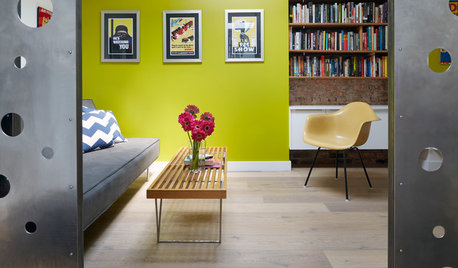
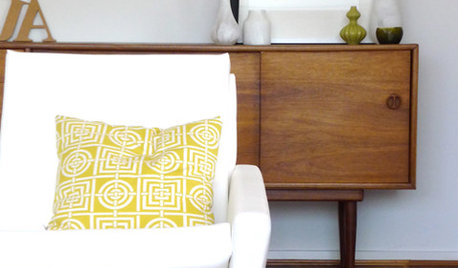

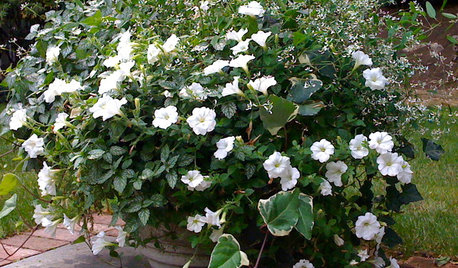


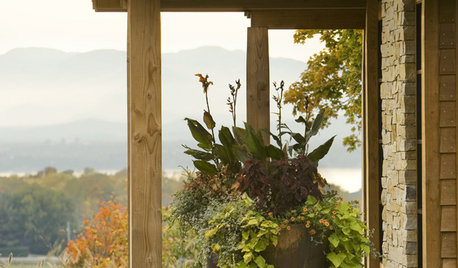






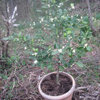
greenman28 NorCal 7b/8a